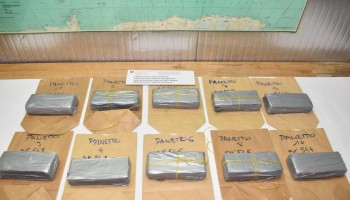{loadposition drug_trafficking}
1. “The Southern Route”: Afghanistan -> Pakistan -> SE Asia (Heroin, 150 metric tons)
Afghanistan supplies 80 percent of the world’s opium, and thus, 80 percent of its heroin. Almost half the opium cultivated in Afghanistan is trafficked through Pakistan, but Pakistan itself has few heroin users. The country tends to stick to funneling the drug through its territory, reaping the cash rewards of that trade.
Pakistani traffickers operate a number of direct air (and sea) trafficking routes to Europe, according to the UNODC, mostly to the United Kingdom and the Netherlands.
2. Andean region -> USA (Cocaine, 140 metric tons)
North America accounted for more than 40 percent of global cocaine consumption in 2007 and 2008, while the countries in the EU and European Free Trade Association accounted for over 25 percent of consumption.
3. “The Balkan Route”: Afghanistan -> Iran -> Turkey -> Southeast Europe -> Western Europe (Heroin, 105 metric tons)
Of the 105 metric tons that embarks on this route, only 37%, ends up in Europe. The rest is diverted from Iran to the Caucauses, or toward Africa.
Trends in heroin use indicate that the flow along this route is declining, as more of the supply flows toward the coastal markets of Africa. The number of heroin users in Africa increased by 54% between 2004 and 2008, according to the UNODC, which fears that a rise in IV drug use there could worsen an already severe HIV/AIDS epidemic.
4. “The Northern Route”: Afghanistan -> Central Asia -> Russia -> Western Europe (Heroin, 95 metric tons)
The largest national market for Afghan heroin is the Russian Federation, and that market has rapidly expanded since the dissolution of the Soviet Union. Reports indicate that Russia is there heroin is now doing its worst damage, including through the spread of HIV.
5. Andean region -> Europe (Cocaine, 60 metric tons)
Although cocaine use appears to be growing in developing countries, the vast bulk of the production is destined for two major overseas markets: North America (6.2 million users in 2008) and Europe (4 to 5 million users).





